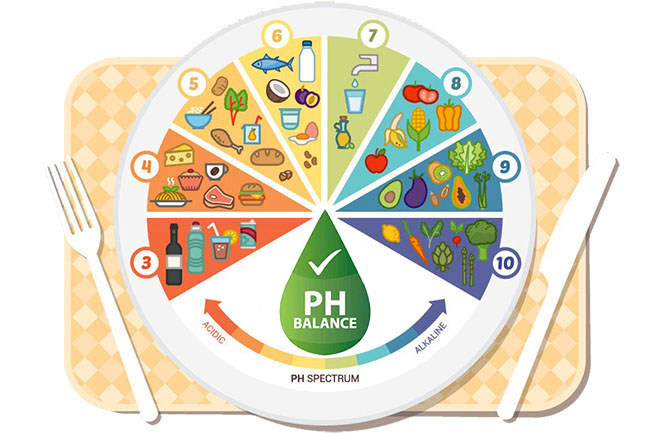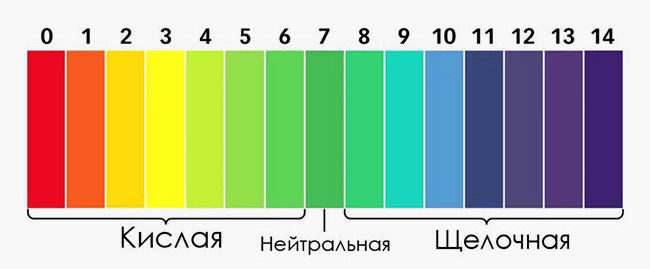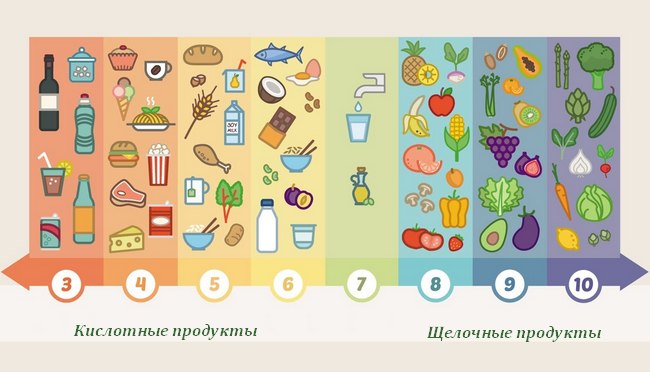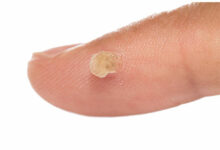Foods are categorized in many ways: plant-based, animal-based, protein-based, carbohydrate-based, harmful, beneficial, organic, inorganic, gourmet, staple—the list goes on! And each category has its own characteristics, used as a basis for creating a diet. For example, vegetarians choose only plant-based foods, those adhering to a healthy diet choose beneficial foods, and those trying to lose weight choose low-calorie foods. Another classification method was proposed in the early twentieth century. This classification has been criticized, repeatedly refined and supplemented, then forgotten, then returned to the peak of popularity. Today, it is gaining popularity once again.
According to this classification, the foods we eat can be either acidic or alkaline. The former are seen as harmful, while the latter are beneficial. Does modern science support this classification, and should it be a major concern?

What is pH?
To understand what alkaline foods are and how they affect the body, we must first understand pH. pH is the measure of the concentration of hydrogen ions, reflecting the degree of their activity. It is a quantitative expression of the acidity of a given environment. It plays a crucial role in the biochemical reactions that take place in the organism. It has an impact on the properties and functioning of proteins and amino acids.
A neutral pH of 7 is considered normal for the human body. In the blood, it can increase slightly to 7.45 without causing harm. For the gastric environment, the ideal pH is 3.5.

pH Scale
Changes in the acid-base balance (also known as acid-base equilibrium, abbreviated as ABE) can lead to serious illnesses. That is why the body’s buffer systems (bicarbonate, phosphate, protein, hemoglobin, and erythrocytes) strictly regulate it.
Acidosis is an increase in acidity (decrease in pH) in the body. The main causes are:
- fever;
- intestinal disorders;
- pregnancy;
- starvation;
- diabetes.
Consequences of acidosis:
- atherosclerosis, varicose veins, hypertension, increased risk of stroke and heart attack;
- blindness;
- diabetes;
- tumors;
- coma, death;
- obesity, cellulite.
Acidic metabolic products “like” to accumulate in the connective tissue of the hips, buttocks, and upper arms. This leads to an increase in the number of adipocytes. The result is excess weight and the appearance of orange peel in these areas.
Alkalosis is an increase in pH due to an absolute or relative excess of bases. The most common causes are:
- hyperventilation of the lungs due to organic brain damage, poisoning by toxins, increased temperature, acute blood loss;
- vomiting, taking diuretics, kidney disease, hyperhidrosis;
- prolonged consumption of alkalizing foods (leads to moderate alkalosis);
- hemolysis.
Consequences of alkalosis:
- hypokalemia;
- arrhythmia;
- neuromuscular excitability, convulsions;
- hypoxemia;
- respiratory failure.
It is important to note that severe forms of alkalosis and acidosis are extremely rare, as the body’s buffer systems react instantly to changes in pH and normalize it. But often, illnesses, poor health, and decreased performance indicate minor, but still significant ABE disorders. There are different ways to restore it. One of them is an alkaline diet.
Effects of alkaline foods
In the mid-twentieth century, it was proposed to distinguish between alkaline and acidic foods that directly affect the body’s pH levels.
Alkaline (alkalizing) foods — after entering the body, they trigger alkaline reactions that increase pH and normalize (if consumed within normal limits) ABE. They can lead to alkalosis.
Acidic (acidifying) foods — after entering the body, they trigger acidic reactions that decrease pH, disrupt ABE, and lead to acidosis.

Since the pH level is lowered in 95% of people, and the body has an acidic environment, it is necessary to make alkalizing foods the basis of the diet. Their effect on the body can hardly be overestimated:
- relieve fatigue, drowsiness, depression, give energy, improve mood;
- strengthen immunity;
- enrich the body with vital minerals: zinc, magnesium, calcium, sodium, iron;
- cleanse the intestines, remove toxins;
- promote weight loss;
- preserve youth and beauty, improving the appearance and health of the skin (combats cellulite), hair, and nails;
- normalize the functioning of the cardiovascular system;
- destroy free radicals, reducing the risk of developing cancer;
- improve vision;
- relieve swelling.
When consumed correctly and in sufficient quantities, foods with an alkaline reaction can improve the functioning of many organs, improve health, and reduce the risk of various diseases. Conversely, if the diet is dominated by acidic foods, leading to acidification of the body, serious health problems are likely to develop.
A few “buts”
If foods with an alkaline environment are so beneficial and contribute not only to the health of the body but also to weight loss, why do nutritionists and doctors treat them with some apprehension?
Reason 1
Such a classification of foods was first proposed by Walker, a well-known expert in the field of nutrition. The problem is that he did not have a medical education. And it is unknown how exactly he calculated the alkalizing and acidifying coefficients. And yet, to this day, his table is the basis for alkaline nutritional systems aimed at restoring pH. Doubts about the reliability of the data he provided are the main reason for distrust.
Reason 2
It has been scientifically proven that even if acidic foods predominate over alkalizing foods in the diet for a long time, this will not lead to catastrophic consequences. The reason for this is the body’s buffer systems, which automatically normalize pH.
Reason 3
People often perceive foods that alkalize the body as a panacea for all ills and refuse to eat acidifying foods. This is fundamentally the wrong approach to organizing nutrition, which will lead to alkalosis with all its consequences.
Reason 4
Walker’s ideas inspired many healers who are quite authoritative among the people. These include Alexander Timofeevich Ogulov and Ivan Pavlovich Neumyvakin. They have entire systems for restoring the body’s ABE. These systems include breathing exercises, oral administration of baking soda, and special physical exercises. And, of course, a special diet with a predominance of alkalizing foods. However, official medicine is skeptical of Ogulov’s and Neumyvakin’s methods and urges caution when experimenting with them on oneself.
Reason 5
There are no official scientific research results confirming a clear division of foods into those that alkalize and acidify the body. On the contrary, scientists are increasingly saying that this division is conditional. For example, fresh beans are alkaline, while dried and boiled beans are acidic. One variety of black currant is distinguished by its sweet taste, as it has a high concentration of sugar. Another is so sour that it makes your cheeks pucker. And they will have completely different effects on pH.
And even more so, there is no research on the degree of alkalization. It is unknown where Walker got the acid-base indices for his classification. After all, he did not have scientific laboratories at his disposal, and he himself was neither a physician, nor a chemist, nor a biologist. He



